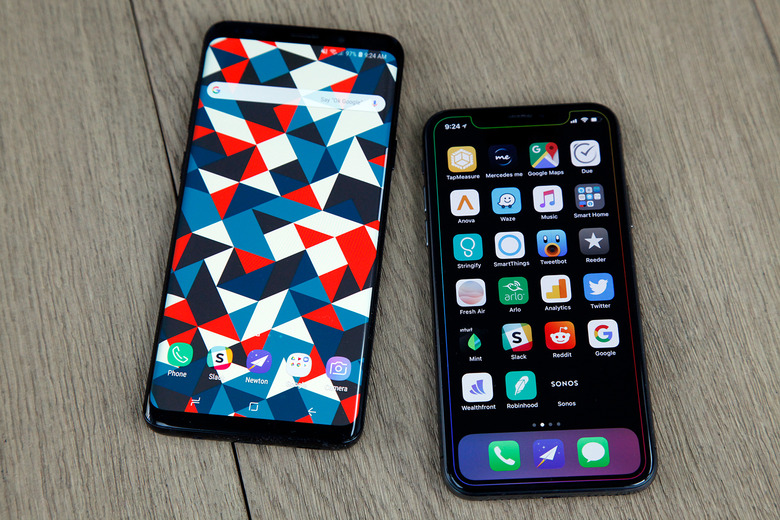This Is What The Galaxy S10 And iPhone X Of Our Dreams Would Look Like
If yesterday's phone launch proves anything, it's that we've reached peak smartphone design. In a world of iPhone X clones, Oppo came up with a crazy new phone that forces itself not to copy the notch. Of course, the irony that the Find X looks just like a Galaxy S/Note or that Color OS looks a lot like Apple iOS doesn't escape us.
However, the Find X design is hardly perfect. We've got a motorized camera system that slides up whenever you want to unlock the phone, take a picture, or take a selfie. It's a neat concept, but it's destined to fail for a couple of reasons. The first one I already mentioned, the motorized sliding mechanism. The second one is related to the first one. This phone doesn't have any water resistance, and that's not what we want for the future of smartphones.
Posted online by smartphone leaker Ice Universe, the following image shows what looks like a Galaxy S or Note handset. But because it doesn't bear any markings, it could just as well be an iPhone of the future. Or a OnePlus that copies an iPhone, because that's what OnePlus does.
This may be a design beyond. pic.twitter.com/lViQUsW1Jv
— PhoneArt (@UniverseIce) June 20, 2018
Now for the bad news: the image is just a concept, imagining a design "beyond." Beyond what? Beyond Infinity Display perhaps? We have no idea, but that device right there doesn't exist.
The next logical step for smartphone makers is to kill the remaining bezels. Whether it's the notch, the top-and-bottom bezels, or the top-notch-and-bottom-chin, the bezels must go away.
That means that all phone components located inside the bezels or notches must be placed under the screen. Sound has to pass through the screen so that you can still use the handset to place calls. The display has to be transparent enough so that the selfie cam can still take pics and authenticate users. And so on.
We do know that Apple and Samsung are two of the companies working on true all-screen phones. Apple has patents describing such innovations. Samsung, meanwhile, has recently filed similar patents. And the display division of the South Korean conglomerate just created a screen that uses bone conduction to transmit sound.
In other words, the Galaxy phone or iPhone of our dreams might actually look just like the handset in the image above. But we're probably at least a couple of years away from designs like this.
